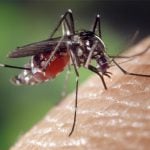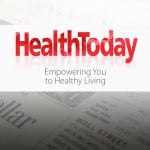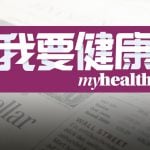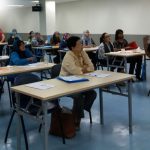As children, we feel invincible. We run carefree and have absolutely no time to imagine that we would ever run afoul of the ravages of time. Yet it is at this young age that we either build strong foundations or creaky weak ones that will affect us as we grow older. Prof Winnie Chee Siew Swee, Professor of Nutrition & Dietetics at the Centre of Transformative Nutrition & Health, IMU talks about the clear relationship between osteoporosis and adolescent health.
Osteoporosis — the word brings up images of walking canes, bent backs and hip fractures. These are the things we feel are inevitable as part of life’s wear-and-tear on our physical bodies and we often tell ourselves to worry about it when the time comes.
But this really should not be the case. Osteoporosis is in actual fact a disease of the young—the risks of developing it is rooted in what we do in our childhood.
“It is in childhood, before we reach puberty, that our bodies and bones are growing and developing rapidly. This is actually the time that we need to accumulate and reach peak bone mass to prevent the onset of osteoporosis later in life,” Prof Winnie explains.
Research has shown that increasing peak bone mass by just ten percent at a young age can decrease our risk of a fracture caused by osteoporosis later in life [1].
With this in mind, in 2017, a team of researchers including Prof Winnie set out on the PREBONE-Kids study which examined the bone health status of 243 Malaysian pre-adolescent children. It was a year-long study of the children who were aged 9 to 11 years.
The study was based on the hypothesis that modifiable lifestyle factors such as calcium and vitamin D intakes, physical activity and body composition could predict the bone health status of children.
“This is important because it means that as adults we can help to ensure optimum conditions for children to develop strong skeletal structures that will continue to serve them long into the future,” Prof Winnie says.

“And it is not only the individual that has to gain by better bone health. As a country that has an ageing population, decreasing the incidence of osteoporotic fractures will also have a big impact on the health system,” she adds.
| Let’s keep active |
|---|
| Many people in their adult lives go to gyms to build muscle and lean mass. But it seems that we probably should be looking at gaining lean mass even when we are young.
As Prof Winnie explains, the study determined that lean mass was the strongest predictor of total body and lumbar spine bone mineral content and density in both boys and girls. “Lean mass exerts a higher tensile force on bones and this stimulates bone cells,” explains Prof Winnie. Other studies done in India and Iran and those on Caucasian children have also shown that children with a higher lean mass showed better bone density. In Malaysia, this is significant. Our country struggles with obesity rates in children, and we rank the second highest in ASEAN at 12.7 percent for those aged five to 19 years. [2] “Almost 33 percent of the 243 participants in our study were overweight and obese,” says Prof Winnie. “Fat mass does not stimulate bone cells as effectively as lean mass.” Lean mass is developed through an active lifestyle but does this mean that active kids equate to healthy bones? Yes, but it also depends on the type of activity they are involved in. “We found that physical activity in boys was the main predictor for lean mass in boys but not girls. This was tied to the fact that the majority of the boys in our study were involved in moderate to vigorous sports activities such as running, hockey and handball. In contrast, the girls were generally involved in lower intensity, shorter activities such as aerobics exercise and dancing,” says Prof Winnie. Besides helping to build lean mass, physical activity also helps bone health as it leads to activation of cells embedded within our bones. These cells signal molecules to stimulate development of bone tissue. |
Calcium and the Sun
Another two pertinent factors that affect bone building in children are calcium intake and vitamin D.
“We struggle with low calcium intake in our children,” says Prof Winnie. On average, the participants of the study were only getting 25 percent of the national recommended calcium intake of 1,300 mg for adequate growth and bone health. Low calcium intake in children affects bone mineral density and has been shown to result negatively on growth and height.
But making sure that we eat foods high in calcium is not enough. This needs to go hand in hand with good levels of vitamin D. “Vitamin D facilitates calcium absorption and therefore plays a critical role in calcium homeostasis and skeletal development,” says Prof Winnie.
The study showed that the levels of vitamin D in adolescents in Malaysia were low. About 40 percent of the children in the study had inadequate vitamin D levels with the girls showing a significantly lower level as compared to the boys.
One of the reasons for this was that the girls in the study were not as physically active which meant they were not getting as much sun exposure as the boys. “Culturally as well, girls tend to wear clothes that cover up and they try to avoid the sun. This also lessens their exposure,” explains Prof Winnie. Other studies, she adds, have reported similar high prevalence of low vitamin D levels among growing children in Malaysia. [3]
Starting young
What does this all mean for us? In a nutshell the study has found that lean mass, alongside other modifiable lifestyle factors such as physical activity and calcium intake, is a major determinant of bone health.
“Modifiable is the key word here. We need to encourage physical activity, and ensure optimum calcium intake and diets that build lean body mass in our children,” advocates Prof Winnie.
“Healthy bones in childhood will give us the strong foundations for a healthier life as we get older.”
Vitamin D and Staying Active in Lockdown
It looks like it is time we all take the age-old mothers’ advice to heart: drink your milk, eat your greens, put down that device and play outside! While milk and dark leafy greens are good sources of calcium, the various movement restrictions caused by the pandemic makes it hard for us to go out and play. There is already evidence that show decreased levels of vitamin D in children during this past year.
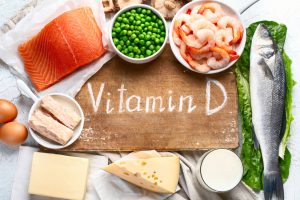
“You can think about consuming more calcium- and vitamin D-rich foods (see table below) if you are able to. Otherwise, catch the morning sun through a window, on a balcony or in your garden for at least 15 minutes or more,” says Prof Winnie. “We might not be able to go outside much during the pandemic, but children can still be encouraged to be active around the house. As much as we would like to leave them to their devices, there is so much at stake here. Stay safe today, but don’t forget about tomorrow.”
| Some Foods Rich in Calcium: | Some Foods Rich in Vitamin D: |
|---|---|
| Skimmed milk powder
Full cream milk Low-fat cheese, yoghurt Ikan bilis Canned sardines Cooked dhal Tofu Tempeh Watercress (sai-yong choy) Kai Lan Sawi |
Salmon
Mackerel Sardines Beef liver Eggs Fortified milk and yoghurt Cheddar cheese |
[1] Cummings S, Black D, Nevitt M, et al. Bone density at various sites for prediction of hip fractures. The Study of Osteoporotic Fractures Research Group. Lancet. 1993;341(8837):72-5. DOI:10.1016/0140-6736(93)92555-8.
[2] ‘Global Health Observatory Data Repository: Prevalence of overweight, age-standardized’
[3] High prevalence of vitamin D insufficiency and its association with BMI-for-age among primary school children in Kuala Lumpur, Malaysia, 2021, Geok L. Khor, Winnie S.S. Chee, Zalilah M. Shariff, Bee K. Poh, Mohan Arumugam, Jamalludin A.Rahman, Hannah E. Theobald
In the News:
20 October, Melaka Hari Ini –Wanita, kanak-kanak berisiko tinggi hidap osteoporosis
20 October, MyMetro – Waspada! Makin ramai ada tulang rapuh
20 October, Sarawak Updates – Wanita, kanak-kanak berisiko hidap tulang rapuh
20 October, Bernama.com (BM) – Wanita, Kanak-kanak Berisiko Tinggi Hidap Osteoporosis
20 October, Bernama.com (Eng) – Women, Children Face High Risk Of Developing Osteoporosis
20 October, Malaysian Daily News – Wanita, Kanak-kanak Berisiko Tinggi Hidap Osteoporosis






